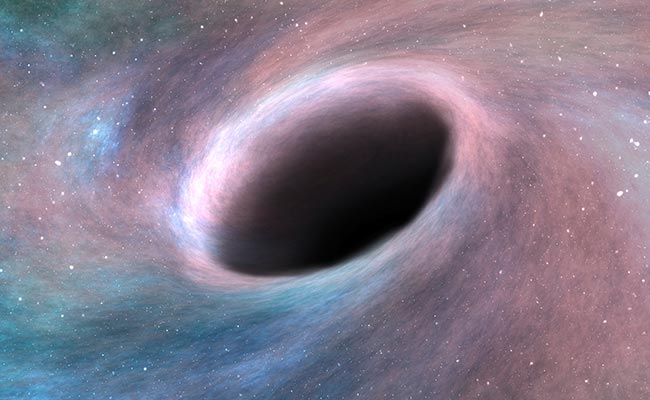"Giant Black Hole 660 Million Times Bigger Than Sun"
The mass of a supermassive black hole at the centre of a nearby giant elliptical galaxy is 660 million times greater than that of the Sun, astronomers have found.
Researchers from the University of California, Irvine (UCI) and colleagues derived a highly precise measurement of the mass of the black hole using high-resolution data from the Atacama Large Millimetre/submillimetre Array (ALMA) in Chile.
They were able to determine the speed of a disk of cold molecular gas and dust orbiting the supermassive black hole at the heart of galaxy NGC 1332.
The researchers calculated the black hole's mass to be 660 million times greater than that of the Sun. This is among the most precise measurements for the mass of a galaxy's central black hole, scientists said.
"This is the first time that ALMA has probed the orbital motion of cold molecular gas well inside the gravitational sphere of influence of a supermassive black hole," said Aaron Barth from UCI.
"We are directly viewing the region where the cold gas is responding to the black hole's gravitational pull," said Barth.
To calculate the mass of a black hole in a galaxy's centre, astronomers must be able to measure the speed of something orbiting around it, he said.
"For a precise measurement, we need to zoom in to the very centre of a galaxy where the black hole's gravitational pull is the dominant force. ALMA is a fantastic new tool for carrying out these observations," said Barth.
Dense, cold clouds of interstellar gas and dust do not emit visible light, but glow brightly at wavelengths that ALMA can observe.
Researchers trained ALMA's observational powers on NGC 1332, a giant elliptical galaxy in the southern sky 73 million light-years from Earth. Elliptical galaxies are known to contain massive central black holes.
About one in 10 elliptical galaxies contain disks of cold molecular gas and dust that orbit their centres, scientists said.
ALMA can observe radio-wavelength light emitted by molecules in these structures.
The emission is shifted to shorter or longer wavelengths by the Doppler Effect depending on whether the disk's gas is rotating towards or away from observers, which enables astronomers to map the motion of the gas, scientists said.
In this case, researchers focused on radio-wave emissions from carbon monoxide (CO) molecules, since the CO signal is bright and readily detected with ALMA.
"This observation demonstrates a technique that can be applied to many other galaxies to measure the masses of supermassive black holes to remarkable precision," said Benjamin Boizelle from UCI.
